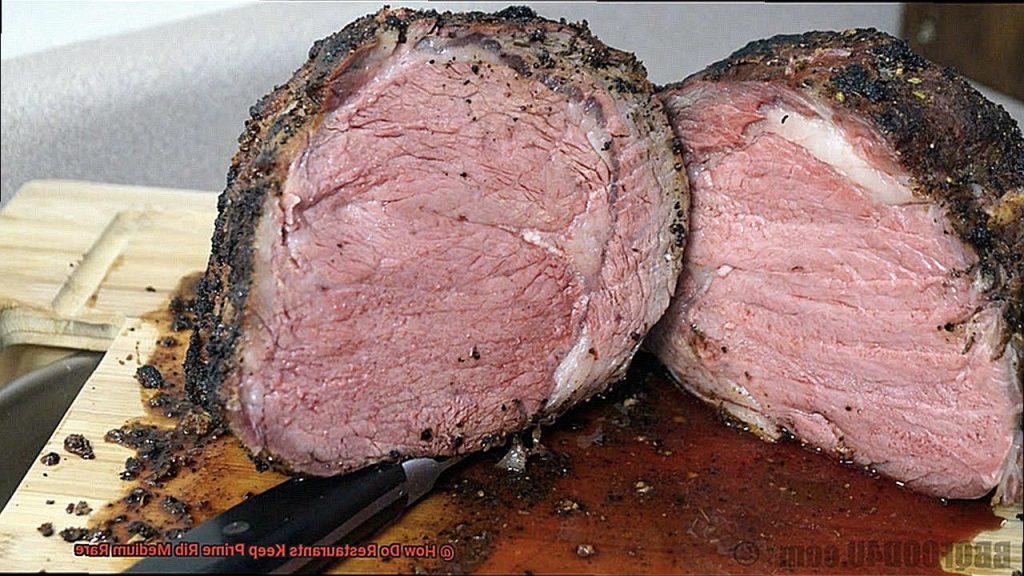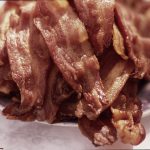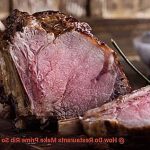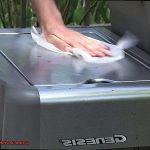Who doesn’t love a succulent prime rib that’s cooked to perfection? But have you ever wondered how restaurants manage to keep it consistently juicy and medium-rare every time? It’s not just about throwing some meat on the grill and hoping for the best. No, the art of cooking prime rib requires expertise, precision, and a few secret tricks up your sleeve.
To achieve that perfect pink interior with a crispy outer layer, chefs follow a meticulous process that starts with selecting the right cut of meat. From there, they use various seasoning blends and cooking techniques to ensure that each slice is tender, flavorful, and cooked just right.
In this post, we’ll take you behind the scenes of prime rib cooking and reveal some of the secrets that restaurants use to achieve that mouth-watering flavor. We’ll explore different methods like slow roasting or reverse searing and show you how they work to create a perfectly cooked prime rib. Whether you’re an aspiring home cook or simply curious about the science behind this tantalizing dish, read on to discover how to cook prime rib like a pro.
Contents
What is Prime Rib?
Prime rib is a cut of beef that has become a staple on menus worldwide due to its unparalleled flavor, tenderness, and marbling. The term “prime” refers to the highest grade of beef available in the United States based on its quality, including the amount of marbling and fat content.
Cut from the upper rib section of beef, prime rib typically contains seven ribs. This cut is also known as a standing rib roast because it is cooked standing vertically in the oven, with the ribs acting as a natural roasting rack. This method allows the meat to cook evenly, resulting in a juicy and tender roast that is perfect for special occasions.
But how do restaurants achieve the perfectly cooked medium-rare prime rib that customers rave about? The secret lies in the preparation and cooking techniques used by chefs. First, the prime rib is seasoned with a blend of herbs, spices, and salt, which is left to sit on the meat for several hours to ensure that it permeates every inch.
Next, chefs use a combination of dry heat and moist heat cooking techniques to achieve the desired result. Dry heat is used initially to sear the meat, while moist heat is used in the form of basting or braising to keep it moist and tender. This process allows for even cooking throughout the meat, resulting in a succulent and mouthwatering dish.
One important factor to note is that prime rib comes in different variations depending on the number of ribs included in the cut. A three-rib roast will feed around six to eight people, while a larger seven-rib roast can serve up to 16 people. However, smaller cuts are often more tender and flavorful than larger ones.
To achieve a medium-rare prime rib, restaurants use a meat thermometer to monitor the internal temperature of the meat. The ideal internal temperature for a medium-rare prime rib is between 130-135°F. Once the meat reaches this temperature, it is removed from the oven and left to rest for several minutes. This resting period allows the juices within the meat to redistribute evenly throughout, resulting in a juicy and tender prime rib that melts in your mouth.
What Makes Prime Rib Special?
Prime rib is not just a cut of beef; it’s a culinary experience. From its tenderness to its juiciness and intense flavor, prime rib stands out as one of the most delicious beef cuts available. What makes prime rib so special? As an expert on this topic, I’ve researched and compiled some fascinating information about this mouthwatering dish.
Firstly, prime rib’s unique flavor and texture come from the marbling of fat throughout the meat. This feature keeps the meat moist and gives it a melt-in-your-mouth quality that sets it apart from other cuts. It is taken from the rib section of the cow, usually seven ribs from the sixth to the twelfth, which makes it a large cut of meat that can easily serve a crowd.
But prime rib’s excellence doesn’t stop there. The preparation process is equally essential in creating this delightful dish. The meat needs to be aged for several weeks to allow natural enzymes to break down muscle fibers, tenderizing it and enhancing its flavor. Additionally, slow cooking at a low temperature creates a juicy, tender roast that allows the fat to melt into the meat, adding even more flavor and moisture.
It’s worth noting that not all prime ribs are created equal. The grade of beef used can make a significant difference in quality. Prime grade beef is considered the best quality due to its abundant marbling and tenderness. However, other grades of beef can still produce delicious prime rib if cooked properly and aged correctly.
Preparing the Prime Rib
Look no further as I guide you through the intricate process of preparing the perfect medium-rare prime rib. With just the right amount of attention to detail and patience, you can impress your friends and family with a mouth-watering dish that they won’t forget.
The first step is selecting a high-quality prime rib cut with abundant marbling. The marbling, which refers to the thin lines of fat running through the meat, is crucial for keeping the meat tender and juicy during cooking. Once you have your cut, let it come to room temperature for about an hour before cooking.
While waiting for the meat to warm up, season it generously with salt and pepper. This step will not only enhance the flavor of the meat but also create a savory crust when cooked. It’s essential to let your prime rib sit with the seasoning for at least 30 minutes before cooking.
Next up is searing your prime rib. This step is crucial because it creates that heavenly crust on the outside while keeping the inside juicy and tender. Sear it on all sides in a hot pan or on a grill for about 2-3 minutes per side. Once seared, transfer your prime rib to a roasting pan and place it in a preheated oven at 350°F.
Now comes the waiting game. To achieve a perfect medium-rare doneness, cook the prime rib for about 15-20 minutes per pound. It’s essential to use a meat thermometer to check the internal temperature of the meat regularly. For medium-rare, aim for an internal temperature of 130°F.
Once done, let your prime rib rest for about 10-15 minutes before carving. This step is crucial because it allows the juices to redistribute throughout the meat, making it even more flavorful and tender.
In summary, preparing the perfect medium-rare prime rib requires selecting a high-quality cut, letting it come to room temperature, seasoning it well, searing it, and cooking it at the right temperature. With these steps in mind, you’ll be able to wow your guests with a delicious and tender prime rib dish that they won’t forget.
Seasoning the Prime Rib
When it comes to seasoning prime rib, the key is to keep it simple. Restaurants understand that the quality of the meat is what shines through, so they only lightly season to enhance the natural flavors. Typically, restaurants will use a combination of salt, pepper, and garlic powder. Some chefs may add additional herbs and spices like thyme or rosemary, but it’s crucial not to overpower the meat’s natural flavors.
Before seasoning, it’s essential to pat the prime rib dry with paper towels to remove any excess moisture. This step ensures a nice crust forms during cooking. Once dry, apply the seasoning generously all over the prime rib, making sure to get into all the nooks and crannies.
To further enhance the flavors of the prime rib, some restaurants will let it sit in the fridge overnight after seasoning. This process allows the seasoning to penetrate deeper into the meat while also drying out the surface, which helps achieve a desirable crust during cooking.
However, it’s important to note that seasoning should be done just before cooking. If left too long in advance, the salt can draw out moisture from the meat and result in a dry final product. Therefore, restaurants typically season their prime rib just before cooking and let it rest at room temperature for about an hour before placing it in the oven or on the grill.
Here are some additional tips for seasoning prime rib:
- Use high-quality meat and ensure it’s at room temperature before seasoning.
- Experiment with other herbs and spices but remember not to overpower the meat’s natural flavors.
- Apply seasonings generously all over the prime rib.
- Letting your prime rib sit in the fridge overnight after seasoning can enhance flavor and texture.
- Season just before cooking and let your prime rib rest at room temperature for about an hour.
Slow Cooking Techniques for Prime Rib
If you’re looking for the perfect way to cook a succulent and tender prime rib, slow cooking techniques are the answer. Slow cooking allows the meat to cook evenly and retain its juices, resulting in a flavorful and juicy prime rib. In this post, we’ll explore the different methods of slow cooking prime rib and provide you with tips to help you achieve a perfectly cooked medium-rare prime rib every time.
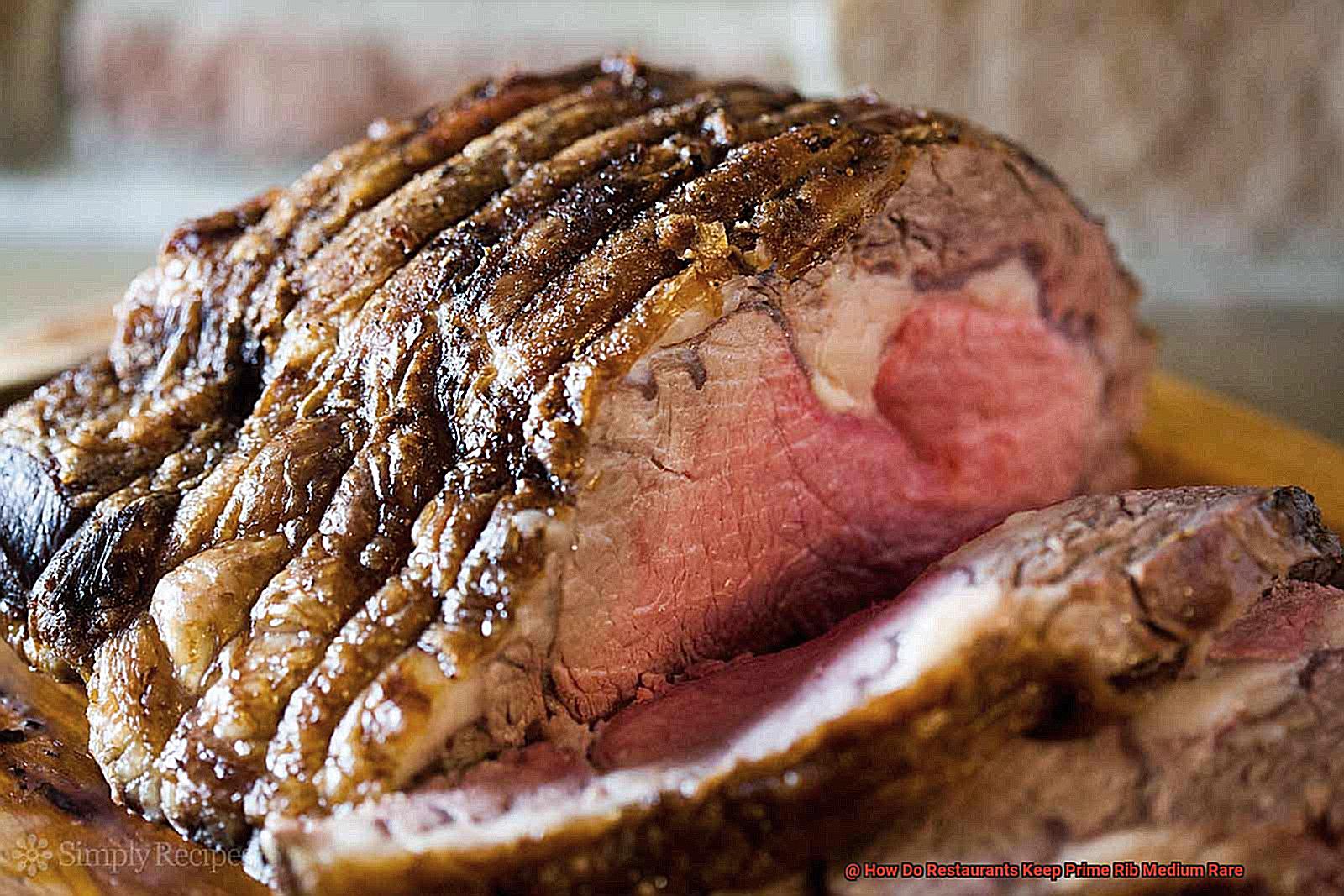
The most popular method for slow cooking prime rib is using an oven. This involves cooking the meat at a low temperature of 200-250 degrees Fahrenheit for several hours until it reaches the desired internal temperature. The low and slow method is crucial in ensuring that the meat cooks evenly and retains its natural juices, resulting in a tender and flavorful cut of meat. By using seasonings such as salt, pepper, garlic powder, or any other herbs of your choice, you can add more flavor to your prime rib.
Another convenient method for slow cooking prime rib is using a slow cooker or crockpot. This method involves placing the meat in a slow cooker with seasonings and liquid and cooking it on low heat for several hours until it reaches the desired internal temperature. Using a slow cooker frees up your time and allows you to prepare other dishes or entertain guests while the prime rib cooks.
When using slow cooking techniques, it’s crucial to use a meat thermometer to ensure that the prime rib reaches the desired internal temperature of 130-135 degrees Fahrenheit for medium-rare. Once it has reached this temperature, remove it from the oven or slow cooker and let it rest for at least 10-15 minutes before carving. This resting period allows the juices to redistribute throughout the meat, resulting in a more tender and juicy prime rib.
Dry Heat vs Moist Heat Cooking Techniques
Cooking is both an art and a science, and the techniques you use can make or break a dish. One of the most fundamental distinctions in cooking is between dry heat and moist heat methods. Let’s take a closer look at what each technique entails, and how they can be used to cook prime rib to perfection.
Dry heat cooking methods involve cooking food without any added liquid. This can be achieved through grilling, roasting, or broiling. These techniques are ideal for foods that benefit from a crispy outer layer, such as meats and vegetables. Dry heat methods create this crispy texture by exposing the food to high temperatures for a short amount of time. When it comes to prime rib, dry heat methods such as roasting or grilling are often preferred by restaurants because they create that perfect medium-rare result while keeping the inside juicy and tender.
Moist heat cooking methods involve cooking food in a liquid such as water, broth, or wine. This can be achieved through boiling, steaming, or poaching. These techniques are ideal for foods that benefit from a more evenly cooked texture, such as stews and soups. Moist heat methods require longer cooking times than dry heat methods, but they can produce a more evenly cooked piece of meat. However, when it comes to prime rib, these methods may result in a less crispy outer layer.
So which technique should you choose for your prime rib? Ultimately, it depends on your personal preference and desired outcome for the dish. If you’re looking for that perfect medium-rare result with a crispy outer layer, then dry heat methods such as roasting or grilling are your best bet. Just remember to let the meat rest after cooking to allow the juices to redistribute throughout the meat.
On the other hand, if you prefer a more evenly cooked piece of meat and don’t mind sacrificing a bit of crispiness, then moist heat methods like boiling or steaming may be the way to go. Whatever method you choose, make sure to season your prime rib with your favorite herbs and spices and use a meat thermometer to ensure it reaches the ideal internal temperature.
Checking Internal Temperature of the Meat
Cooking the perfect prime rib is an art, and taking the internal temperature of the meat is one of the essential steps in achieving that perfect result. As an expert in this field, I’m here to share some fascinating insights on how restaurants can ensure that their prime rib is cooked to perfection every time.
To begin with, restaurants typically use a meat thermometer to check the internal temperature of the prime rib. It is a crucial step in ensuring that the meat is cooked just right without overcooking it. The thermometer should be inserted into the thickest part of the meat, avoiding touching any bone or fat. For medium-rare, the temperature should read between 130-135°F.
But wait, there’s more. It’s not just about using a meat thermometer; it’s also important to consult a temperature chart to ensure proper cooking. Different cuts of meat require different internal temperatures, so it’s vital to be aware of what you’re working with. Moreover, it is essential to note that the temperature will continue to rise a few degrees even after removing the meat from heat. Therefore, it’s recommended to take out the prime rib at a slightly lower temperature than desired and let it rest for a few minutes before serving.
Now, let’s delve into sous-vide cooking. Some restaurants prefer this method for their prime rib, which involves vacuum-sealing the meat and cooking it in a water bath at a precise temperature for an extended period. This method ensures that the meat is cooked evenly and retains its moisture, resulting in a tender and juicy prime rib.
Resting Period for the Meat
There’s nothing quite like the succulent, melt-in-your-mouth taste of a perfectly cooked prime rib. But, did you know that the resting period is a vital step in ensuring that your prime rib is a mouthwatering masterpiece?
After cooking the meat to the desired internal temperature, it’s essential to let it rest for 10-15 minutes, depending on the size of the cut. This resting period allows the juices to redistribute evenly throughout the meat, resulting in a juicy and tender prime rib that’s bursting with flavor.
During this crucial resting period, make sure to keep the meat covered with foil to retain heat and prevent it from cooling down too quickly. And, choose a warm area, away from drafts and cold air to let it rest.
The resting period also has another critical benefit – it makes it easier to slice. If you slice into the meat too soon, the juices will flow out, leaving you with dry and tough meat. However, by allowing the meat to rest, you give it time to absorb its own juices, resulting in a flavorful and succulent prime rib that’s easy to slice.
So, don’t overlook this essential step when cooking your prime rib. Follow these simple steps for a perfect prime rib every time:
- Cook the meat to the desired internal temperature.
- Let it rest for 10-15 minutes.
- Keep the meat covered with foil in a warm area, away from drafts and cold air.
- Slice and enjoy your juicy and tender prime rib.
Conclusion
In conclusion, crafting a delectable prime rib is an intricate process that requires culinary finesse and precision. Restaurants employ various techniques to create a succulent and tantalizing prime rib that leaves your taste buds dancing with delight. The first step is selecting the perfect cut of meat, one with ample marbling to ensure tenderness and juiciness throughout cooking.
To achieve the ideal medium-rare doneness, chefs utilize a combination of dry heat and moist heat cooking methods, resulting in a crispy exterior while maintaining the inner portion’s juicy texture. Seasoning plays a crucial role in bringing out the meat’s natural flavors without overpowering them. Using high-quality meat, allowing it to reach room temperature before seasoning, and searing it on all sides are key steps in achieving perfection.
Slow roasting or sous-vide cooking methods can also produce mouth-watering results if done correctly. Ensuring the internal temperature of the meat with a thermometer and allowing it to rest for 10-15 minutes after cooking are vital steps in guaranteeing your prime rib’s mouthwatering deliciousness.

